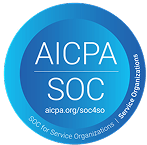Common mistakes when looking for an education loan for master's (and how to avoid them)
Here are some of the most common mistakes international master’s students make when looking for education loans and strategies to avoid them:
1. Overlooking no-cosigner loan options
Many international students assume they need a U.S. or Canadian cosigner to secure a loan, leading them to limit their options or rely on family connections. While cosigner loans can offer better interest rates, no-cosigner loan options are becoming increasingly available from lenders that cater to international students.
How to avoid it: Research specialized lenders that offer no-cosigner loans. These postgraduate international student loans often evaluate your future earning potential and academic achievements rather than your current financial standing, making them accessible to students without local cosigner support.
2. Not considering the total cost of the loan
A common mistake is focusing only on the loan’s interest rate without fully understanding the total cost of the loan, including fees, repayment terms and the duration of the loan. This can lead to unexpected expenses and a longer repayment period than originally anticipated.
How to avoid it: When comparing loans, take into account not just the interest rate, but also the total cost of the loan, including origination fees, penalties for early repayment, and the total amount you’ll need to repay over time. Always refer to the annual percentage rate or “APR.” It represents the yearly cost based on the loan’s interest rate and fees, expressed as a percentage. An APR provides an “apples-to-apples” comparison across available loan products and providers.
3. Ignoring currency exchange risks with home country loans
Some international students take out loans in their home countries, unaware of the risks associated with fluctuating exchange rates. If the local currency weakens against the U.S. dollar, the cost of repaying the loan can increase significantly, putting additional financial pressure on the borrower.
How to avoid it: Carefully consider the currency exchange risk when opting for a home country loan. If possible, look for loans in U.S. dollars or other stable currencies to avoid potential losses due to exchange rate fluctuations. Alternatively, set aside extra savings to hedge against any currency volatility.
4. Over-borrowing
Many students borrow more than they need, assuming that it will be easier to repay the loan after graduation. However, over-borrowing can lead to excessive debt, higher interest payments, and financial strain after completing the program.
How to avoid it: Only borrow what’s necessary to cover tuition, living expenses and essential costs. Create a detailed budget outlining all your expected expenses and stick to it. Avoid the temptation to borrow extra for discretionary spending.
5. Not reviewing repayment terms thoroughly
Some students don’t take the time to fully understand the repayment terms of their postgraduate student loans, including the repayment period, the grace period after graduation, and whether deferment or forbearance options are available. This can result in missed payments, penalties or an inability to repay the loan on time.
How to avoid it: Before signing any loan agreement, thoroughly review the repayment terms. Understand when repayment starts, the monthly payment amounts and what happens if you’re unable to pay. Consider loans with flexible repayment options, such as deferred payments until after graduation or income-based repayment plans.
6. Failing to explore alternative funding options
Some students rely entirely on loans without considering alternative funding sources such as scholarships, fellowships or assistantships. This can lead to higher loan amounts and more debt than necessary.
How to avoid it: Make scholarships and assistantships a part of your funding strategy. Research and apply for as many postgraduate scholarships as possible, especially those that cater to international graduate students. Assistantships or part-time campus jobs can also help offset your living expenses and reduce the need for loans.


